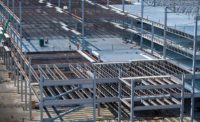Water sector officials were disappointed the final $9.9-billion water resources package that passed the House on Dec. 7 included so little for water utilities. Kristina Surfus, managing director of government affairs for the National Association of Clean Water Agencies, says an analysis by her organization estimated utilities could lose as much as $16.3 billion over one year because of COVID-19 impacts. The effects range from decreased use of sewer systems in commercial or industrial areas to an increasing number of households unable to pay their monthly bills. That could have a direct effect at utilities, not only on staffing, but also on infrastructure projects, Surfus says.
“Some utilities are going to be in this very difficult position of not being able to make some of the [infrastructure] investments they were hoping to make…and some utilities that had planned rate increases are going to have to go back and reconsider that,” she says.
Tommy Holmes, legislative director for the American Water Works Association (AWWA), notes that some projects will continue or advance in order to meet federal or state regulatory drinking water requirements, but some others to replace or shore up aging systems may face delays.
Water infrastructure funding has not fared particularly well during the current session of Congress. Water groups are hopeful that more funding for water and wastewater projects will be taken up by the 117th Congress. “We have just seen water infrastructure get punted to a subsequent conversation, so this needs to be a top priority for the next year,” Surfus says.
Mike Strachn, a senior adviser with water resource consultants Dawson & Associates, said via email: “Surely, the next Congress will take up broader water infrastructure.”
Possible vehicles include another coronavirus economic relief bill, or a potential stimulus bill, during the next session. Holmes adds that the incoming administration may show substantial support for water utilities. He says, “I’m encouraged by [President-elect Joe] Biden’s emphasis on infrastructure and water quality.”



